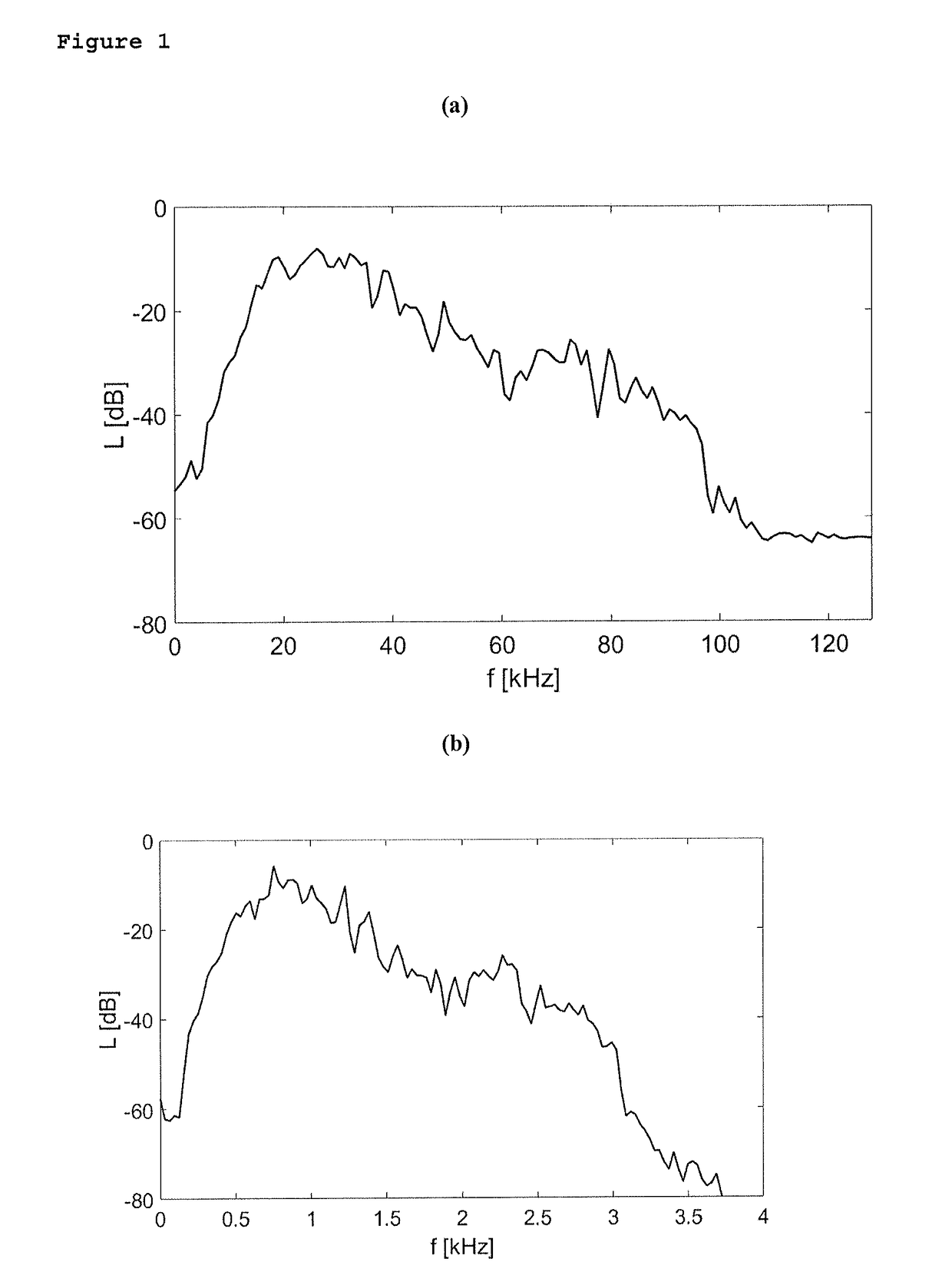Rendering wideband ultrasonic signals audible
a wideband ultrasonic signal and audible technology, applied in ultrasonic/sonic/infrasonic diagnostics, digital/coded signal control, instruments, etc., can solve the problems of not being able to achieve the original signal spectral content and modulation, unable to use sound sources, and unable to deliver statements that are only limited and not always corr
- Summary
- Abstract
- Description
- Claims
- Application Information
AI Technical Summary
Benefits of technology
Problems solved by technology
Method used
Image
Examples
Embodiment Construction
[0016]In a preferred embodiment of the method according to the invention, the ultrasonic signals have their frequencies compressed. That is to say that the method according to the invention is used to produce compressed acoustic data. The compression of the acoustic data transforms them into the audible range. That is to say that the frequency of the signal is compressed. A suitable choice of compression factor ensures that the amplitude profile is maintained. The compression factor is chosen such that the spectral range to be considered falls completely into the audible range. An exemplary embodiment of the ultrasonic range from 20 to 100 kHz is the choice of a compression factor of 32.
[0017]In an embodiment of the method according to the invention, the acoustic signals rendered audible are not reproduced but rather are stored. In this case, the compression of the acoustic data reduces the amount of memory in comparison with the original acoustic data substantially. This is particu...
PUM
 Login to View More
Login to View More Abstract
Description
Claims
Application Information
 Login to View More
Login to View More - R&D
- Intellectual Property
- Life Sciences
- Materials
- Tech Scout
- Unparalleled Data Quality
- Higher Quality Content
- 60% Fewer Hallucinations
Browse by: Latest US Patents, China's latest patents, Technical Efficacy Thesaurus, Application Domain, Technology Topic, Popular Technical Reports.
© 2025 PatSnap. All rights reserved.Legal|Privacy policy|Modern Slavery Act Transparency Statement|Sitemap|About US| Contact US: help@patsnap.com



